Archives: Courses
Non-medical Opioid Use and Opioid Use Disorder in Adolescents
(Note: a course evaluation is required to receive credit for this course.)
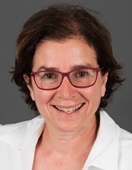
Sharon Levy, MD, MPH
Director, Adolescent Substance Use and Addiction Program
Associate Professor in Pediatrics, Harvard Medical School
The most common focus when people discuss substance use is the impact it has on infants and adults, despite evidence of the impact adolescent substance use has on adults, and the increasing number of adolescents who meet diagnostic criteria for a substance use disorder. This presentation will focus on the neurobiological effects of opioid use in adolescents, as well as primary prevention, secondary prevention and treatment options. The presentation was recorded at Effective Pediatric Pain Management and End of Life Care 2021, on March 6, 2021.
Objectives:
At the conclusion of this educational program, learners will be able to:
- Explain what part of the brain develops during adolescence and how that relates to substance use.
- Describe how to screen for and intervene with teens that report non- medical opioid use.
- Discuss the importance of medication assisted treatment for opioid use disorders.

In support of improving patient care, Boston Children’s Hospital is jointly accredited by the Accreditation Council for Continuing Medical Education (ACCME), the Accreditation Council for Pharmacy Education (ACPE), and the American Nurses Credentialing Center (ANCC), to provide continuing education for the healthcare team.
Physician
Boston Children’s Hospital designates this live activity for a maximum of 0.5 AMA PRA Category 1 Credits ™. Physicians should claim only credit commensurate with the extent of their participation in this activity.
Risk Management
This activity meets the requirements for 0.5 Risk Management Credits as proscribed by the Massachusetts Board of Registration in Medicine and defined in 243 CMR 2.06(5)(d) I. Please check your individual state licensing board requirements before claiming these credits.
Nurse
Boston Children’s Hospital designates this activity for 0.5 contact hours for nurses. Nurses should only claim credit commensurate with the extent of their participation in the activity.
Physician Assistant
Boston Children’s Hospital has been authorized by the American Academy of PAs (AAPA) to award AAPA Category 1 CME credits for activities planned in accordance with AAPA CME Criteria. This activity is designated for 0.5 AAPA Category 1 CME credits. PAs should only claim credit commensurate with the extent of their participation.
Disclosure Policy
Boston Children’s Hospital adheres to all ACCME Essential Areas, Standards, and Policies. It is Boston Children’s policy that those who have influenced the content of a CE activity (e.g. planners, faculty, authors, reviewers and others) disclose all relevant financial relationships with commercial entities so that Boston Children’s may identify and resolve any conflicts of interest prior to the activity. These disclosures will be provided in the activity materials along with disclosure of any commercial support received for the activity. Additionally, faculty members have been instructed to disclose any limitations of data and unlabeled or investigational uses of products during their presentations.
Disclosure Statement
The following planners, speakers, and content reviewers, on behalf of themselves, have reported the following relevant financial relationships with any entity producing, marketing, reselling, or distributing health care goods or services consumed by, or used on patients:
Sharon Levy, MD, MPH
Consultant- Orexo
Please see the FAQs below for common questions about how to work through a course. If you have a question or issue that is not addressed in the FAQ, please use this form to submit a help request, or if your issue urgent, call the CE office at: 617-919-9908.
How do I navigate this course? There are two ways to access and navigate course content with the interactive table of contents: at the bottom of the main course page or in the sidebar on the right side of the page. Select the links in the table of contents to access the corresponding content. Depending on the course, access to content may be linear, in which case each content module or section can only be accessed if the prior ones are completed, or non-linear, in which case modules and sections can be accessed in any order. Use the breadcrumbs at the top of any course page to orient yourself within a course, or return to a previous course section or the main course page. How do I claim credit? If the course has been accredited, available credits will be displayed on the course home page. Select only those credits that apply to your profession, and click/tap “Apply Selection.” You may make your selection at any point while you are taking the course, or after you have completed it. How do I download a certificate? There are two ways to view/download your certificate: from within the course or from the course listing under your profile (select the document icon). In either case, you must have selected at least one available course credit type to generate a certificate. How do I view/print my transcript? You must be logged in to view your transcript. Select My Profile at the top of the page. If you do not see the transcript selector, be sure the Courses tab is selected. Select the type of credit and dates to include in your credit report. To include all credits from all time, leave the options blank. Select Download Transcript to view/download your transcript. Note each credit type in your transcripts starts a new page. How do I request a refund? Please email the CE Department to request a refund.How do I Navigate this Course?

How do I claim credit for this course?
How do I download a certificate?
How do I view/print my transcript?
How do I request a refund?
Screening for Adolescent Substance Use Disorders Durning Pain Management
(Note: a course evaluation is required to receive credit for this course.)

Diana Deister, MD, MS
Adolescent Substance Use and Addiction Program
Assistant in Medicine, Department of Pediatrics
Dr. Diana Deister reviews the epidemiology of substance use disorders, risk factors for development of substance use disorders in the pediatric pain population, diagnosis of substance use disorders, a brief screening tool to predict the risk of existing substance use disorders, and when to refer for additional treatment. The presentation was recorded at Effective Pediatric Pain Management and End of Life Care, on March 6, 2021.
Learning Objectives:
At the conclusion of this educational program, learners will be able to:
- Identify risk factors for development of substance use disorders (SUD’s) in the pediatric pain population.
- Describe local epidemiology regarding opioid death.
- Apply criteria for diagnosis of SUD’s.
- Use a brief screening tool to predict risk of existing SUD’s, and when to refer for additional treatment.

In support of improving patient care, Boston Children’s Hospital is jointly accredited by the Accreditation Council for Continuing Medical Education (ACCME), the Accreditation Council for Pharmacy Education (ACPE), and the American Nurses Credentialing Center (ANCC), to provide continuing education for the healthcare team.
Physician
Boston Children’s Hospital designates this live activity for a maximum of 0.75 AMA PRA Category 1 Credits ™. Physicians should claim only credit commensurate with the extent of their participation in this activity.
Risk Management
This activity meets the requirements for 0.75 Risk Management Credits as proscribed by the Massachusetts Board of Registration in Medicine and defined in 243 CMR 2.06(5)(d) I. Please check your individual state licensing board requirements before claiming these credits.
Nurse
Boston Children’s Hospital designates this activity for 0.75 contact hours for nurses. Nurses should only claim credit commensurate with the extent of their participation in the activity.
Physician Assistant
Boston Children’s Hospital has been authorized by the American Academy of PAs (AAPA) to award AAPA Category 1 CME credits for activities planned in accordance with AAPA CME Criteria. This activity is designated for 0.75 AAPA Category 1 CME credits. PAs should only claim credit commensurate with the extent of their participation.
Disclosure Policy
Boston Children’s Hospital adheres to all ACCME Essential Areas, Standards, and Policies. It is Boston Children’s policy that those who have influenced the content of a CE activity (e.g. planners, faculty, authors, reviewers and others) disclose all relevant financial relationships with commercial entities so that Boston Children’s may identify and resolve any conflicts of interest prior to the activity. These disclosures will be provided in the activity materials along with disclosure of any commercial support received for the activity. Additionally, faculty members have been instructed to disclose any limitations of data and unlabeled or investigational uses of products during their presentations.
Disclosure Statement
The following planners, speakers, and content reviewers, on behalf of themselves, have reported the following relevant financial relationships with any entity producing, marketing, reselling, or distributing health care goods or services consumed by, or used on patients:
Diana Deister, MD, MS
None
Please see the FAQs below for common questions about how to work through a course. If you have a question or issue that is not addressed in the FAQ, please use this form to submit a help request, or if your issue urgent, call the CE office at: 617-919-9908.Shortcode
How do I navigate this course? There are two ways to access and navigate course content with the interactive table of contents: at the bottom of the main course page or in the sidebar on the right side of the page. Select the links in the table of contents to access the corresponding content. Depending on the course, access to content may be linear, in which case each content module or section can only be accessed if the prior ones are completed, or non-linear, in which case modules and sections can be accessed in any order. Use the breadcrumbs at the top of any course page to orient yourself within a course, or return to a previous course section or the main course page. How do I claim credit? If the course has been accredited, available credits will be displayed on the course home page. Select only those credits that apply to your profession, and click/tap “Apply Selection.” You may make your selection at any point while you are taking the course, or after you have completed it. How do I download a certificate? There are two ways to view/download your certificate: from within the course or from the course listing under your profile (select the document icon). In either case, you must have selected at least one available course credit type to generate a certificate. How do I view/print my transcript? You must be logged in to view your transcript. Select My Profile at the top of the page. If you do not see the transcript selector, be sure the Courses tab is selected. Select the type of credit and dates to include in your credit report. To include all credits from all time, leave the options blank. Select Download Transcript to view/download your transcript. Note each credit type in your transcripts starts a new page. How do I request a refund? Please email the CE Department to request a refund.How do I Navigate this Course?

How do I claim credit for this course?
How do I download a certificate?
How do I view/print my transcript?
How do I request a refund?
Using Behavioral Medicine to Ease Pediatric Chronic Pain
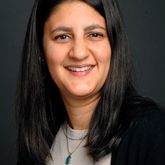
Rupa Gambhir, PsyD
Staff Psychologist, Department of Anesthesiology, Critical Care and Pain Medicine
Instructor of Psychology, Department of Psychiatry, Harvard Medical School
Dr. Gambhir discusses behavioral medicine interventions for pediatric patients with chronic pain, including psychoeducation, relaxation, CBT, ACT, biofeedback, wellness and lifestyle modifications, and parental involvement. The presentation was recorded at Effective Pediatric Pain Management and End of Life Care 2021, on March 6, 2021.
Objective:
Learning Objectives:
At the conclusion of this educational program, learners will be able to:
- Identify patients for behavioral pain therapy

In support of improving patient care, Boston Children’s Hospital is jointly accredited by the Accreditation Council for Continuing Medical Education (ACCME), the Accreditation Council for Pharmacy Education (ACPE), and the American Nurses Credentialing Center (ANCC), to provide continuing education for the healthcare team.
Physician
Boston Children’s Hospital designates this live activity for a maximum of 0.5 AMA PRA Category 1 Credits ™. Physicians should claim only credit commensurate with the extent of their participation in this activity.
Risk Management
This activity meets the requirements for 0.5 Risk Management Credits as proscribed by the Massachusetts Board of Registration in Medicine and defined in 243 CMR 2.06(5)(d) I. Please check your individual state licensing board requirements before claiming these credits.
Nurse
Boston Children’s Hospital designates this activity for 0.5 contact hours for nurses. Nurses should only claim credit commensurate with the extent of their participation in the activity.
Physician Assistant
Boston Children’s Hospital has been authorized by the American Academy of PAs (AAPA) to award AAPA Category 1 CME credits for activities planned in accordance with AAPA CME Criteria. This activity is designated for 0.5 AAPA Category 1 CME credits. PAs should only claim credit commensurate with the extent of their participation.
Disclosure Policy
Boston Children’s Hospital adheres to all ACCME Essential Areas, Standards, and Policies. It is Boston Children’s policy that those who have influenced the content of a CE activity (e.g. planners, faculty, authors, reviewers and others) disclose all relevant financial relationships with commercial entities so that Boston Children’s may identify and resolve any conflicts of interest prior to the activity. These disclosures will be provided in the activity materials along with disclosure of any commercial support received for the activity. Additionally, faculty members have been instructed to disclose any limitations of data and unlabeled or investigational uses of products during their presentations.
Disclosure Statement
The following planners, speakers, and content reviewers, on behalf of themselves, have reported the following relevant financial relationships with any entity producing, marketing, reselling, or distributing health care goods or services consumed by, or used on patients:
Rupa Gambhir, PsyD
None
Please see the FAQs below for common questions about how to work through a course. If you have a question or issue that is not addressed in the FAQ, please use this form to submit a help request, or if your issue urgent, call the CE office at: 617-919-9908.
How do I navigate this course? There are two ways to access and navigate course content with the interactive table of contents: at the bottom of the main course page or in the sidebar on the right side of the page. Select the links in the table of contents to access the corresponding content. Depending on the course, access to content may be linear, in which case each content module or section can only be accessed if the prior ones are completed, or non-linear, in which case modules and sections can be accessed in any order. Use the breadcrumbs at the top of any course page to orient yourself within a course, or return to a previous course section or the main course page. How do I claim credit? If the course has been accredited, available credits will be displayed on the course home page. Select only those credits that apply to your profession, and click/tap “Apply Selection.” You may make your selection at any point while you are taking the course, or after you have completed it. How do I download a certificate? There are two ways to view/download your certificate: from within the course or from the course listing under your profile (select the document icon). In either case, you must have selected at least one available course credit type to generate a certificate. How do I view/print my transcript? You must be logged in to view your transcript. Select My Profile at the top of the page. If you do not see the transcript selector, be sure the Courses tab is selected. Select the type of credit and dates to include in your credit report. To include all credits from all time, leave the options blank. Select Download Transcript to view/download your transcript. Note each credit type in your transcripts starts a new page. How do I request a refund? Please email the CE Department to request a refund.How do I Navigate this Course?

How do I claim credit for this course?
How do I download a certificate?
How do I view/print my transcript?
How do I request a refund?
Pediatric Palliative Care Medicine
(Note: a course evaluation is required to receive credit for this course.)

Richard D. Goldstein, MD
Program Director, Robert’s Program
Assistant Professor of Pediatrics, Harvard Medical School
Dr. Goldstein discusses suffering as distinct from pain, and the need to identify, understand, and engage suffering in primary palliative care. The presentation was recorded at Effective Pediatric Pain Management and End of Life Care, on March 6, 2021.
Learning Objectives:
At the conclusion of this educational program, learners will be able to:
- Incorporate best practices for management of pediatric palliative care
- Identify and address suffering in our most vulnerable patients

In support of improving patient care, Boston Children’s Hospital is jointly accredited by the Accreditation Council for Continuing Medical Education (ACCME), the Accreditation Council for Pharmacy Education (ACPE), and the American Nurses Credentialing Center (ANCC), to provide continuing education for the healthcare team.
Physician
Boston Children’s Hospital designates this live activity for a maximum of 0.75 AMA PRA Category 1 Credits ™. Physicians should claim only credit commensurate with the extent of their participation in this activity.
Risk Management
This activity meets the requirements for 0.75 Risk Management Credits as proscribed by the Massachusetts Board of Registration in Medicine and defined in 243 CMR 2.06(5)(d) I. Please check your individual state licensing board requirements before claiming these credits.
Nurse
Boston Children’s Hospital designates this activity for 0.75 contact hours for nurses. Nurses should only claim credit commensurate with the extent of their participation in the activity.
Physician Assistant
Boston Children’s Hospital has been authorized by the American Academy of PAs (AAPA) to award AAPA Category 1 CME credits for activities planned in accordance with AAPA CME Criteria. This activity is designated for 0.75 AAPA Category 1 CME credits. PAs should only claim credit commensurate with the extent of their participation.
Disclosure Policy
Boston Children’s Hospital adheres to all ACCME Essential Areas, Standards, and Policies. It is Boston Children’s policy that those who have influenced the content of a CE activity (e.g. planners, faculty, authors, reviewers and others) disclose all relevant financial relationships with commercial entities so that Boston Children’s may identify and resolve any conflicts of interest prior to the activity. These disclosures will be provided in the activity materials along with disclosure of any commercial support received for the activity. Additionally, faculty members have been instructed to disclose any limitations of data and unlabeled or investigational uses of products during their presentations.
Disclosure Statement
The following planners, speakers, and content reviewers, on behalf of themselves, have reported the following relevant financial relationships with any entity producing, marketing, reselling, or distributing health care goods or services consumed by, or used on patients:
Richard Goldstein, MD
None
Please see the FAQs below for common questions about how to work through a course. If you have a question or issue that is not addressed in the FAQ, please use this form to submit a help request, or if your issue urgent, call the CE office at: 617-919-9908.
How do I navigate this course? There are two ways to access and navigate course content with the interactive table of contents: at the bottom of the main course page or in the sidebar on the right side of the page. Select the links in the table of contents to access the corresponding content. Depending on the course, access to content may be linear, in which case each content module or section can only be accessed if the prior ones are completed, or non-linear, in which case modules and sections can be accessed in any order. Use the breadcrumbs at the top of any course page to orient yourself within a course, or return to a previous course section or the main course page. How do I claim credit? If the course has been accredited, available credits will be displayed on the course home page. Select only those credits that apply to your profession, and click/tap “Apply Selection.” You may make your selection at any point while you are taking the course, or after you have completed it. How do I download a certificate? There are two ways to view/download your certificate: from within the course or from the course listing under your profile (select the document icon). In either case, you must have selected at least one available course credit type to generate a certificate. How do I view/print my transcript? You must be logged in to view your transcript. Select My Profile at the top of the page. If you do not see the transcript selector, be sure the Courses tab is selected. Select the type of credit and dates to include in your credit report. To include all credits from all time, leave the options blank. Select Download Transcript to view/download your transcript. Note each credit type in your transcripts starts a new page. How do I request a refund? Please email the CE Department to request a refund.How do I Navigate this Course?

How do I claim credit for this course?
How do I download a certificate?
How do I view/print my transcript?
How do I request a refund?
Dermatology: Don’t Miss It! When a Pediatrician Should Worry
(Note: a course evaluation is required to receive credit for this course.)
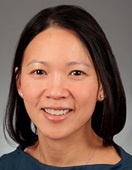
Jennifer Huang, MD
Attending Physician, Dermatology Program
Associate Professor of Dermatology, Harvard Medical School
Many pediatric care providers are unfamiliar with rare, but serious skin conditions in children. This is either because of the rarity of the conditions or inadequate exposure during pediatric residency or nurse practitioner training. This activity is case-based and focused on rare disorders such as neonatal purpura, neonatal blistering, unusual diaper rashes, lumps or bumps that might be malignant and reactive infectious mucocutaneous eruptions. It provides a thorough approach to skin disorders, emphasizing those a practitioner should worry about.
Learning Objectives:
At the conclusion of this educational program, learners will be able to:
- Identify malignant causes of neonatal purpura.
- Develop a systematic process in the evaluation of a diaper rash.
- Recognize infectious causes of mucocutaneous hypersensitivity reactions.

In support of improving patient care, Boston Children’s Hospital is jointly accredited by the Accreditation Council for Continuing Medical Education (ACCME), the Accreditation Council for Pharmacy Education (ACPE), and the American Nurses Credentialing Center (ANCC), to provide continuing education for the healthcare team.
Physician
Boston Children’s Hospital designates this live activity for a maximum of 0.5 AMA PRA Category 1 Credits ™. Physicians should claim only credit commensurate with the extent of their participation in this activity.
Disclosure Policy
Boston Children’s Hospital adheres to all ACCME Essential Areas, Standards, and Policies. It is Boston Children’s policy that those who have influenced the content of a CE activity (e.g. planners, faculty, authors, reviewers and others) disclose all relevant financial relationships with commercial entities so that Boston Children’s may identify and resolve any conflicts of interest prior to the activity. These disclosures will be provided in the activity materials along with disclosure of any commercial support received for the activity. Additionally, faculty members have been instructed to disclose any limitations of data and unlabeled or investigational uses of products during their presentations.
Disclosure Statement
The following planners, speakers, and content reviewers, on behalf of themselves, have reported the following relevant financial relationships with any entity producing, marketing, reselling, or distributing health care goods or services consumed by, or used on patients:
Jennifer Huang, MD
None
Please see the FAQs below for common questions about how to work through a course. If you have a question or issue that is not addressed in the FAQ, please use this form to submit a help request, or if your issue urgent, call the CE office at: 617-919-9908.
How do I navigate this course? There are two ways to access and navigate course content with the interactive table of contents: at the bottom of the main course page or in the sidebar on the right side of the page. Select the links in the table of contents to access the corresponding content. Depending on the course, access to content may be linear, in which case each content module or section can only be accessed if the prior ones are completed, or non-linear, in which case modules and sections can be accessed in any order. Use the breadcrumbs at the top of any course page to orient yourself within a course, or return to a previous course section or the main course page. How do I claim credit? If the course has been accredited, available credits will be displayed on the course home page. Select only those credits that apply to your profession, and click/tap “Apply Selection.” You may make your selection at any point while you are taking the course, or after you have completed it. m How do I download a certificate? There are two ways to view/download your certificate: from within the course or from the course listing under your profile (select the document icon). In either case, you must have selected at least one available course credit type to generate a certificate. How do I view/print my transcript? You must be logged in to view your transcript. Select My Profile at the top of the page. If you do not see the transcript selector, be sure the Courses tab is selected. Select the type of credit and dates to include in your credit report. To include all credits from all time, leave the options blank. Select Download Transcript to view/download your transcript. Note each credit type in your transcripts starts a new page. How do I request a refund? Please email the CE Department to request a refund.How do I Navigate this Course?

How do I claim credit for this course?
How do I download a certificate?
How do I view/print my transcript?
How do I request a refund?
Gastrointestinal Manifestations of Cystic Fibrosis
(Note: a course evaluation is required to receive credit for this course.)

Sabina Sabharwal, MD, MPH
Director, Cystic Fibrosis Center
Attending Physician, Division of Gastroenterology, Hepatology and Nutrition.
Instructor of Pediatrics, Harvard Medical School
This course is an overview of pancreatic, intestinal, hepatobiliary, and nutritional GI manifestations of cystic fibrosis. This will be inclusive of diagnosis, background, presentation, treatment and conclusion.
Learning Objectives:
At the conclusion of this educational program, learners will be able to:
- Identify the four categories of CF GI disease: Pancreatic, Intestinal, Hepatobiliary, and Nutritional.
- For each category, this module will prepare learners to evaluate background, presentation, diagnosis, and treatment options.

In support of improving patient care, Boston Children’s Hospital is jointly accredited by the Accreditation Council for Continuing Medical Education (ACCME), the Accreditation Council for Pharmacy Education (ACPE), and the American Nurses Credentialing Center (ANCC), to provide continuing education for the healthcare team.
Physician
Boston Children’s Hospital designates this live activity for a maximum of 0.75 AMA PRA Category 1 Credits ™. Physicians should claim only credit commensurate with the extent of their participation in this activity.
Physician Assistant
Boston Children’s Hospital has been authorized by the American Academy of PAs (AAPA) to award AAPA Category 1 CME credits for activities planned in accordance with AAPA CME Criteria. This activity is designated for 0.75 AAPA Category 1 CME credits. PAs should only claim credit commensurate with the extent of their participation.
Disclosure Policy
Boston Children’s Hospital adheres to all ACCME Essential Areas, Standards, and Policies. It is Boston Children’s policy that those who have influenced the content of a CE activity (e.g. planners, faculty, authors, reviewers and others) disclose all relevant financial relationships with commercial entities so that Boston Children’s may identify and resolve any conflicts of interest prior to the activity. These disclosures will be provided in the activity materials along with disclosure of any commercial support received for the activity. Additionally, faculty members have been instructed to disclose any limitations of data and unlabeled or investigational uses of products during their presentations.
Disclosure Statement
The following planners, speakers, and content reviewers, on behalf of themselves, have reported the following relevant financial relationships with any entity producing, marketing, reselling, or distributing health care goods or services consumed by, or used on patients:
Sabina Sabharwal, MD, MPH
None
Please see the FAQs below for common questions about how to work through a course. If you have a question or issue that is not addressed in the FAQ, please use this form to submit a help request, or if your issue is urgent, call the CE office at: 617-919-9908.
How do I navigate this course? There are two ways to access and navigate course content with the interactive table of contents: at the bottom of the main course page or in the sidebar on the right side of the page. Select the links in the table of contents to access the corresponding content. Depending on the course, access to content may be linear, in which case each content module or section can only be accessed if the prior ones are completed, or non-linear, in which case modules and sections can be accessed in any order. Use the breadcrumbs at the top of any course page to orient yourself within a course, or return to a previous course section or the main course page. How do I claim credit? If the course has been accredited, available credits will be displayed on the course home page. Select only those credits that apply to your profession, and click/tap “Apply Selection.” You may make your selection at any point while you are taking the course, or after you have completed it. How do I download a certificate? There are two ways to view/download your certificate: from within the course or from the course listing under your profile (select the document icon). In either case, you must have selected at least one available course credit type to generate a certificate. How do I view/print my transcript? You must be logged in to view your transcript. Select My Profile at the top of the page. If you do not see the transcript selector, be sure the Courses tab is selected. Select the type of credit and dates to include in your credit report. To include all credits from all time, leave the options blank. Select Download Transcript to view/download your transcript. Note each credit type in your transcripts starts a new page. How do I request a refund? Please email the CE Department to request a refund.How do I navigate this course?

How do I claim credit for this course?
How do I download a certificate?
How do I view/print my transcript?
How do I request a refund?
The Multisystem Inflammatory Syndrome in Children (MIS-C): an Unexpected Development in the SARS CoV-2 Pandemic
(Note: a course evaluation is required to receive credit for this course.)

Mary Beth Son, MD
Director, Services and Outreach;
Program Director, Rheumatology Program
Assistant Professor of Pediatrics, Harvard Medical School
The focus of this presentation is to discuss the emergence of MIS-C, the clinical characteristics of MIS-C, the pathophysiology of MIS-C, and the long term outcomes. The presentation was recorded at Advances in Pediatric Healthcare 2020, on Nov. 4-5, 2020.
Learning Objectives:
At the conclusion of this educational program, learners will be able to:
- Discuss the emergence of MIS-C.
- Discuss the clinical characteristics of MIS-C.
- Discuss the pathophysiology of MIS-C.
- Discuss long term outcomes.

In support of improving patient care, Boston Children’s Hospital is jointly accredited by the Accreditation Council for Continuing Medical Education (ACCME), the Accreditation Council for Pharmacy Education (ACPE), and the American Nurses Credentialing Center (ANCC), to provide continuing education for the healthcare team.
Physician
Boston Children’s Hospital designates this live activity for a maximum of 0.75 AMA PRA Category 1 Credits ™. Physicians should claim only credit commensurate with the extent of their participation in this activity.
Risk Management
This activity meets the requirements for 0.75 Risk Management Credits as proscribed by the Massachusetts Board of Registration in Medicine and defined in 243 CMR 2.06(5)(d) I. Please check your individual state licensing board requirements before claiming these credits.
Nurse
Boston Children’s Hospital designates this activity for 0.75 contact hours for nurses. Nurses should only claim credit commensurate with the extent of their participation in the activity.
Disclosure Policy
Boston Children’s Hospital adheres to all ACCME Essential Areas, Standards, and Policies. It is Boston Children’s policy that those who have influenced the content of a CE activity (e.g. planners, faculty, authors, reviewers and others) disclose all relevant financial relationships with commercial entities so that Boston Children’s may identify and resolve any conflicts of interest prior to the activity. These disclosures will be provided in the activity materials along with disclosure of any commercial support received for the activity. Additionally, faculty members have been instructed to disclose any limitations of data and unlabeled or investigational uses of products during their presentations.
Disclosure Statement
The following planners, speakers, and content reviewers, on behalf of themselves, have reported the following relevant financial relationships with any entity producing, marketing, reselling, or distributing health care goods or services consumed by, or used on patients:
Mary Beth Son, MD
None
Please see the FAQs below for common questions about how to work through a course. If you have a question or issue that is not addressed in the FAQ, please use this form to submit a help request, or if your issue is urgent, call the CE office at: 617-919-9908.
How do I navigate this course? There are two ways to access and navigate course content with the interactive table of contents: at the bottom of the main course page or in the sidebar on the right side of the page. Select the links in the table of contents to access the corresponding content. Depending on the course, access to content may be linear, in which case each content module or section can only be accessed if the prior ones are completed, or non-linear, in which case modules and sections can be accessed in any order. Use the breadcrumbs at the top of any course page to orient yourself within a course, or return to a previous course section or the main course page. How do I claim credit? If the course has been accredited, available credits will be displayed on the course home page. Select only those credits that apply to your profession, and click/tap “Apply Selection.” You may make your selection at any point while you are taking the course, or after you have completed it. How do I download a certificate? There are two ways to view/download your certificate: from within the course or from the course listing under your profile (select the document icon). In either case, you must have selected at least one available course credit type to generate a certificate. How do I view/print my transcript? You must be logged in to view your transcript. Select My Profile at the top of the page. If you do not see the transcript selector, be sure the Courses tab is selected. Select the type of credit and dates to include in your credit report. To include all credits from all time, leave the options blank. Select Download Transcript to view/download your transcript. Note each credit type in your transcripts starts a new page. How do I request a refund? Please email the CE Department to request a refund.How do navigate this course?

How do I claim credit for this course?
How do I download a certificate?
How do I view/print my transcript?
How do I request a refund?
Ocular Effects of Excessive Digital Device Use
(Note: a course evaluation is required to receive credit for this course.)
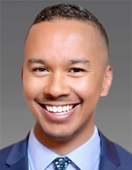
Isdin Oke, MD
Ophthalmologist, Department of Ophthalmology
Instructor of Ophthalmology, Harvard Medical School
Dr. Isdin Oke explores some of the ways in which the visual system in children and adolescents is affected by excessive use of digital technologies. The presentation was recorded at Problematic Interactive Media Use (PIMU): Gaming, Social Media, and More, on Oct. 15, 2021.
Learning Objectives:
At the conclusion of this educational program, learners will be able to:
- Understand how ocular structures grow and the visual system develops throughout childhood and adolescence.
- Identify the short- and long-term effects of digital device use on the eyes.
- Describe strategies to manage ocular systems.

In support of improving patient care, Boston Children’s Hospital is jointly accredited by the Accreditation Council for Continuing Medical Education (ACCME), the Accreditation Council for Pharmacy Education (ACPE), and the American Nurses Credentialing Center (ANCC), to provide continuing education for the healthcare team.
Physician
Boston Children’s Hospital designates this live activity for a maximum of 0.5 AMA PRA Category 1 Credits ™. Physicians should claim only credit commensurate with the extent of their participation in this activity.
Risk Management
This activity meets the requirements for 0.5 Risk Management Credits as proscribed by the Massachusetts Board of Registration in Medicine and defined in 243 CMR 2.06(5)(d) I. Please check your individual state licensing board requirements before claiming these credits.
Nurse
Boston Children’s Hospital designates this activity for 0.5 contact hours for nurses. Nurses should only claim credit commensurate with the extent of their participation in the activity.
Physician Assistant
Boston Children’s Hospital has been authorized by the American Academy of PAs (AAPA) to award AAPA Category 1 CME credits for activities planned in accordance with AAPA CME Criteria. This activity is designated for 0.5 AAPA Category 1 CME credits. PAs should only claim credit commensurate with the extent of their participation.
Psychologist
Continuing Education (CE) credits for psychologists are provided through the co-sponsorship of the American Psychological Association (APA) Office of Continuing Education in Psychology (CEP). The APA CEP Office maintains responsibly for the content of the programs. This course has been approved for 0.5 continuing education credits.
Social Worker
As a Jointly Accredited Organization, Boston Children’s Hospital is approved to offer social work continuing education by the Association of Social Work Boards (ASWB) Approved Continuing Education (ACE) program. Organizations, not individual courses, are approved under this program. State and provincial regulatory boards have the final authority to determine whether an individual course may be accepted for continuing education credit. Boston Children’s Hospital maintains responsibility for this course. Social workers completing this course receive 0.5 ACE CE continuing education credits.
Disclosure Policy
Boston Children’s Hospital adheres to all ACCME Essential Areas, Standards, and Policies. It is Boston Children’s policy that those who have influenced the content of a CE activity (e.g. planners, faculty, authors, reviewers and others) disclose all relevant financial relationships with commercial entities so that Boston Children’s may identify and resolve any conflicts of interest prior to the activity. These disclosures will be provided in the activity materials along with disclosure of any commercial support received for the activity. Additionally, faculty members have been instructed to disclose any limitations of data and unlabeled or investigational uses of products during their presentations.
Disclosure Statement
The following planners, speakers, and content reviewers, on behalf of themselves, have reported the following relevant financial relationships with any entity producing, marketing, reselling, or distributing health care goods or services consumed by, or used on patients:
Isdin Oke, MD
None
Please see the FAQs below for common questions about how to work through a course. If you have a question or issue that is not addressed in the FAQ, please use this form to submit a help request, or if your issue urgent, call the CE office at: 617-919-9908.
How do I navigate this course? There are two ways to access and navigate course content with the interactive table of contents: at the bottom of the main course page or in the sidebar on the right side of the page. Select the links in the table of contents to access the corresponding content. Depending on the course, access to content may be linear, in which case each content module or section can only be accessed if the prior ones are completed, or non-linear, in which case modules and sections can be accessed in any order. Use the breadcrumbs at the top of any course page to orient yourself within a course, or return to a previous course section or the main course page. How do I claim credit? If the course has been accredited, available credits will be displayed on the course home page. Select only those credits that apply to your profession, and click/tap “Apply Selection.” You may make your selection at any point while you are taking the course, or after you have completed it. How do I download a certificate? There are two ways to view/download your certificate: from within the course or from the course listing under your profile (select the document icon). In either case, you must have selected at least one available course credit type to generate a certificate. How do I view/print my transcript? You must be logged in to view your transcript. Select My Profile at the top of the page. If you do not see the transcript selector, be sure the Courses tab is selected. Select the type of credit and dates to include in your credit report. To include all credits from all time, leave the options blank. Select Download Transcript to view/download your transcript. Note each credit type in your transcripts starts a new page. How do I request a refund? Please email the CE Department to request a refund.How do I Navigate this Course?

How do I claim credit for this course?
How do I download a certificate?
How do I view/print my transcript?
How do I request a refund?
The Role of the Social Worker in Problematic Interactive Media Use
(Note: a course evaluation is required to receive credit for this course).
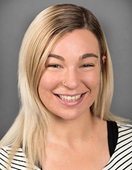
Lauren Mendoza, MSW, LCSW
Clinical Social Worker, Clinic for Interactive Media and Internet Disorders
This course will cover the treatment of PIMU cases through a social work lens, including crisis management strategies, ways to educate patients and families, and the involvement of additional services/resources in collaborative care. The presentation was recorded at Problematic Interactive Media Use (PIMU): Gaming, Social Media, and More, on Oct. 15, 2021.
Learning Objectives:
At the conclusion of this educational program, learners will be able to:
- Understand the different roles that a social worker can have in treating a PIMU case.
- Explain safety assessment, planning, prevention, coaching, psycho-education, and redirecting in crisis management.
- Discuss educational techniques, available resources/services, and processes for mandated reporting/documentation.

In support of improving patient care, Boston Children’s Hospital is jointly accredited by the Accreditation Council for Continuing Medical Education (ACCME), the Accreditation Council for Pharmacy Education (ACPE), and the American Nurses Credentialing Center (ANCC), to provide continuing education for the healthcare team.
Social Worker
As a Jointly Accredited Organization, Boston Children’s Hospital is approved to offer social work continuing education by the Association of Social Work Boards (ASWB) Approved Continuing Education (ACE) program. Organizations, not individual courses, are approved under this program. State and provincial regulatory boards have the final authority to determine whether an individual course may be accepted for continuing education credit. Boston Children’s Hospital maintains responsibility for this course. Social workers completing this course receive 0.75 ACE CE continuing education credits.
Psychologist
Continuing Education (CE) credits for psychologists are provided through the co-sponsorship of the American Psychological Association (APA) Office of Continuing Education in Psychology (CEP). The APA CEP Office maintains responsibly for the content of the programs. This course has been approved for 0.75 continuing education credits.
Physician
Boston Children’s Hospital designates this live activity for a maximum of 0.75 AMA PRA Category 1 Credits ™. Physicians should claim only credit commensurate with the extent of their participation in this activity.
Risk Management
This activity meets the requirements for 0.75 Risk Management Credits as proscribed by the Massachusetts Board of Registration in Medicine and defined in 243 CMR 2.06(5)(d) I. Please check your individual state licensing board requirements before claiming these credits.
Physician Assistant
Boston Children’s Hospital has been authorized by the American Academy of PAs (AAPA) to award AAPA Category 1 CME credits for activities planned in accordance with AAPA CME Criteria. This activity is designated for 0.75 AAPA Category 1 CME credits. PAs should only claim credit commensurate with the extent of their participation.
Nurse
Boston Children’s Hospital designates this activity for 0.75 contact hours for nurses. Nurses should only claim credit commensurate with the extent of their participation in the activity.
Disclosure Policy
Boston Children’s Hospital adheres to all ACCME Essential Areas, Standards, and Policies. It is Boston Children’s policy that those who have influenced the content of a CE activity (e.g. planners, faculty, authors, reviewers and others) disclose all relevant financial relationships with commercial entities so that Boston Children’s may identify and resolve any conflicts of interest prior to the activity. These disclosures will be provided in the activity materials along with disclosure of any commercial support received for the activity. Additionally, faculty members have been instructed to disclose any limitations of data and unlabeled or investigational uses of products during their presentations.
Disclosure Statement
The following planners, speakers, and content reviewers, on behalf of themselves, have reported the following relevant financial relationships with any entity producing, marketing, reselling, or distributing health care goods or services consumed by, or used on patients:
Lauren Mendoza, MSW, LCSW
None
Please see the FAQs below for common questions about how to work through a course. If you have a question or issue that is not addressed in the FAQ, please use this form to submit a help request, or if your issue urgent, call the CE office at: 617-919-9908.
How do I navigate this course? There are two ways to access and navigate course content with the interactive table of contents: at the bottom of the main course page or in the sidebar on the right side of the page. Select the links in the table of contents to access the corresponding content. Depending on the course, access to content may be linear, in which case each content module or section can only be accessed if the prior ones are completed, or non-linear, in which case modules and sections can be accessed in any order. Use the breadcrumbs at the top of any course page to orient yourself within a course, or return to a previous course section or the main course page. How do I claim credit? If the course has been accredited, available credits will be displayed on the course home page. Select only those credits that apply to your profession, and click/tap “Apply Selection.” You may make your selection at any point while you are taking the course, or after you have completed it. How do I download a certificate? There are two ways to view/download your certificate: from within the course or from the course listing under your profile (select the document icon). In either case, you must have selected at least one available course credit type to generate a certificate. How do I view/print my transcript? You must be logged in to view your transcript. Select My Profile at the top of the page. If you do not see the transcript selector, be sure the Courses tab is selected. Select the type of credit and dates to include in your credit report. To include all credits from all time, leave the options blank. Select Download Transcript to view/download your transcript. Note each credit type in your transcripts starts a new page. How do I request a refund? Please email the CE Department to request a refund.How do I Navigate this Course?

How do I claim credit for this course?
How do I download a certificate?
How do I view/print my transcript?
How do I request a refund?
What is Problematic Interactive Media Use (PIMU)? Is It a “New Normal”?

Michael Rich, MD, MPH
Director, Center on Media and Child Health (CMCH); Director, Video Intervention/Prevention Assessment (VIA), Co-Director, Clinic for Interactive Media and Internet Disorders (CIMAID), Attending Physician, Division of Adolescent/Young Adult Medicine, Boston Children’s Hospital; Associate Professor of Pediatrics, Part-time, Harvard Medical School
Dr. Michael Rich gives a brief overview of Problematic Interactive Media Use, its impact on children and adolescents, and some of the ways in which clinicians can identify, diagnosis, and treat PIMU in their patients. The presentation was recorded at Problematic Interactive Media Use (PIMU): Gaming, Social Media, and More, on 10/15/21.
Learning Objectives:
At the conclusion of this educational program, learners will be able to:
- Explain Problematic Interactive Media Use and its effects on physical, psychological, social, and academic health.
- Recognize adolescents’ motivations for using digital technology and identify different PIMU presentations and co-morbidities in patients.
- Discuss PIMU treatment strategies that promote the use of media and technology in a healthy way.

In support of improving patient care, Boston Children’s Hospital is jointly accredited by the Accreditation Council for Continuing Medical Education (ACCME), the Accreditation Council for Pharmacy Education (ACPE), and the American Nurses Credentialing Center (ANCC), to provide continuing education for the healthcare team.
Physicians
Boston Children’s Hospital designates this live activity for a maximum of 0.75 AMA PRA Category 1 Credits ™. Physicians should claim only credit commensurate with the extent of their participation in this activity.
Risk Management
This activity meets the requirements for 0.75 Risk Management Credits as proscribed by the Massachusetts Board of Registration in Medicine and defined in 243 CMR 2.06(5)(d) I. Please check your individual state licensing board requirements before claiming these credits.
Nurse
Boston Children’s Hospital designates this activity for 0.75 contact hours for nurses. Nurses should only claim credit commensurate with the extent of their participation in the activity.
Physician Assistant
Boston Children’s Hospital has been authorized by the American Academy of PAs (AAPA) to award AAPA Category 1 CME credits for activities planned in accordance with AAPA CME Criteria. This activity is designated for 0.75 AAPA Category 1 CME credits. PAs should only claim credit commensurate with the extent of their participation.
Psychologist
Continuing Education (CE) credits for psychologists are provided through the co-sponsorship of the American Psychological Association (APA) Office of Continuing Education in Psychology (CEP). The APA CEP Office maintains responsibly for the content of the programs. This course has been approved for 0.75 continuing education credits.
Social Worker
As a Jointly Accredited Organization, Boston Children’s Hospital is approved to offer social work continuing education by the Association of Social Work Boards (ASWB) Approved Continuing Education (ACE) program. Organizations, not individual courses, are approved under this program. State and provincial regulatory boards have the final authority to determine whether an individual course may be accepted for continuing education credit. Boston Children’s Hospital maintains responsibility for this course. Social workers completing this course receive 0.75 ACE CE continuing education credits.
Disclosure Policy
Boston Children’s Hospital adheres to all ACCME Essential Areas, Standards, and Policies. It is Boston Children’s policy that those who have influenced the content of a CE activity (e.g. planners, faculty, authors, reviewers and others) disclose all relevant financial relationships with commercial entities so that Boston Children’s may identify and resolve any conflicts of interest prior to the activity. These disclosures will be provided in the activity materials along with disclosure of any commercial support received for the activity. Additionally, faculty members have been instructed to disclose any limitations of data and unlabeled or investigational uses of products during their presentations.
Disclosure Statement
The following planners, speakers, and content reviewers, on behalf of themselves, have reported the following relevant financial relationships with any entity producing, marketing, reselling, or distributing health care goods or services consumed by, or used on patients:
Michael Rich, MD, MPH
None
The Digital Wellness Lab is supported by:
Age of Learning, The Alberta Teacher’s Association, AlphaEdison, Amazon Kids, Facebook, Facebook Reality Labs, Instagram, Joan Ganz Conney Center/Sesame Workshop, noggin, Optum Behavioral Health, Pinwheel, Point32Health/Harvard Pilgrim Health Care/Tufts Health Plan, Roblox, Ruderman Family Foundation, TikTok, Trend Micro Cares, and Walt Disney Entertainment.
Please see the FAQs below for common questions about how to work through a course. If you have a question or issue that is not addressed in the FAQ, please use this form to submit a help request, or if your issue urgent, call the CE office at: 617-919-9908.
How do I navigate this course? There are two ways to access and navigate course content with the interactive table of contents: at the bottom of the main course page or in the sidebar on the right side of the page. Select the links in the table of contents to access the corresponding content. Depending on the course, access to content may be linear, in which case each content module or section can only be accessed if the prior ones are completed, or non-linear, in which case modules and sections can be accessed in any order. Use the breadcrumbs at the top of any course page to orient yourself within a course, or return to a previous course section or the main course page. How do I claim credit? If the course has been accredited, available credits will be displayed on the course home page. Select only those credits that apply to your profession, and click/tap “Apply Selection.” You may make your selection at any point while you are taking the course, or after you have completed it. How do I download a certificate? There are two ways to view/download your certificate: from within the course or from the course listing under your profile (select the document icon). In either case, you must have selected at least one available course credit type to generate a certificate. How do I view/print my transcript? You must be logged in to view your transcript. Select My Profile at the top of the page. If you do not see the transcript selector, be sure the Courses tab is selected. Select the type of credit and dates to include in your credit report. To include all credits from all time, leave the options blank. Select Download Transcript to view/download your transcript. Note each credit type in your transcripts starts a new page. How do I request a refund? Please email the CE Department to request a refund.How do I Navigate this Course?

How do I claim credit for this course?
How do I download a certificate?
How do I view/print my transcript?
How do I request a refund?
Media Use Therapy for Problematic Interactive Media Use
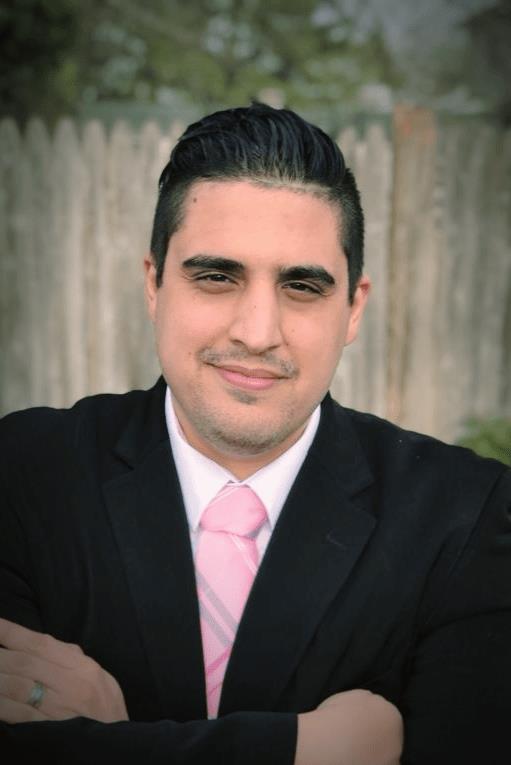
Tarek Aly, MD, MPH
Psychiatrist, Mosaic Psychiatry; Associate, Digital Wellness Lab at Boston Children’s Hospital
In this course, Dr. Tarek Aly defines media use therapy through the modules listed in the MUT Manual and explains how it is used to treat Problematic Interactive Media Use (PIMU) cases. The presentation was recorded at Problematic Interactive Media Use (PIMU): Gaming, Social Media, and More, on 10/15/21.
Learning Objectives:
At the conclusion of this educational program, learners will be able to:
- Understand media use therapy through the modules in the MUT Manual: Assessment, Education, Intervention, Maintenance, and Closure.
- Expand upon general mental health evaluation and treatment by tailoring assessments, education, intervention, and maintenance to be related to PIMU.
- Discuss how culture, environment, medical comorbidities, and psychological and developmental issues may influence Problematic Interactive Media Use and media use therapy.

In support of improving patient care, Boston Children’s Hospital is jointly accredited by the Accreditation Council for Continuing Medical Education (ACCME), the Accreditation Council for Pharmacy Education (ACPE), and the American Nurses Credentialing Center (ANCC), to provide continuing education for the healthcare team.
Physician
Boston Children’s Hospital designates this live activity for a maximum of 0.5 AMA PRA Category 1 Credits ™ . Physicians should claim only credit commensurate with the extent of their participation in this activity.
Risk Management
This activity meets the requirements for 0.5 Risk Management Credits as proscribed by the Massachusetts Board of Registration in Medicine and defined in 243 CMR 2.06(5)(d) I. Please check your individual state licensing board requirements before claiming these credits.
Disclosure Policy
Boston Children’s Hospital adheres to all ACCME Essential Areas, Standards, and Policies. It is Boston Children’s policy that those who have influenced the content of a CE activity (e.g. planners, faculty, authors, reviewers and others) disclose all relevant financial relationships with commercial entities so that Boston Children’s may identify and resolve any conflicts of interest prior to the activity. These disclosures will be provided in the activity materials along with disclosure of any commercial support received for the activity. Additionally, faculty members have been instructed to disclose any limitations of data and unlabeled or investigational uses of products during their presentations.
Disclosure Statement
The following planners, speakers, and content reviewers, on behalf of themselves, have reported the following relevant financial relationships with any entity producing, marketing, reselling, or distributing health care goods or services consumed by, or used on patients:
Tarek Aly, MD, MPH
None
Please see the FAQs below for common questions about how to work through a course. If you have a question or issue that is not addressed in the FAQ, please use this form to submit a help request, or if your issue urgent, call the CE office at: 617-919-9908.
How do I navigate this course? There are two ways to access and navigate course content with the interactive table of contents: at the bottom of the main course page or in the sidebar on the right side of the page. Select the links in the table of contents to access the corresponding content. Depending on the course, access to content may be linear, in which case each content module or section can only be accessed if the prior ones are completed, or non-linear, in which case modules and sections can be accessed in any order. Use the breadcrumbs at the top of any course page to orient yourself within a course, or return to a previous course section or the main course page. How do I claim credit? If the course has been accredited, available credits will be displayed on the course home page. Select only those credits that apply to your profession, and click/tap “Apply Selection.” You may make your selection at any point while you are taking the course, or after you have completed it. How do I download a certificate? There are two ways to view/download your certificate: from within the course or from the course listing under your profile (select the document icon). In either case, you must have selected at least one available course credit type to generate a certificate. How do I view/print my transcript? You must be logged in to view your transcript. Select My Profile at the top of the page. If you do not see the transcript selector, be sure the Courses tab is selected. Select the type of credit and dates to include in your credit report. To include all credits from all time, leave the options blank. Select Download Transcript to view/download your transcript. Note each credit type in your transcripts starts a new page. How do I request a refund? Please email the CE Department to request a refund.How do I Navigate this Course?

How do I claim credit for this course?
How do I download a certificate?
How do I view/print my transcript?
How do I request a refund?
Intersex Traits, Genital Surgery: Who Gets to Decide & Why? Considerations in Surgical Care
(Note: a course evaluation is required to receive credit for this course).

Barbara Chubak, MD
Assistant Professor, Urology
Icahn School of Medicine at Mount Sinai
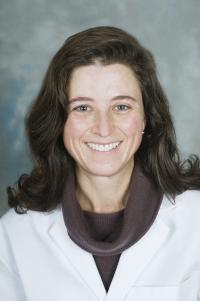
Anne-Marie Amies Oelschlager, MD, FACOG
Professor of Obstetrics & Gynecology
Pediatric & Adolescent Gynecology
Adjunct Professor of Pediatrics, University of Washington School of Medicine
In this debate, Dr. Anne-Marie Amies Oelschlager presents the four arguments that support parents as decision makers in the treatment of children with DSD diagnoses. Dr. Barbara Chubak makes the opposing argument by elaborating why and how pediatric patients born with intersex DSD conditions should be considered an exception to the general rule of parents being decision makers. The presentation was recorded at Intersex Traits (Differences in Sex Development); Clinical and ethical considerations in care across the lifespan, on Oct. 25-26, 2021.
Learning Objectives:
At the conclusion of this educational program, learners will be able to:
- Clarify the unique bioethical challenges of consent to surgery.
- Describe the moral foundation and flaws in parental proxy consent to healthcare for their children.
- Analyze the arguments for and against parents as decision makers in the treatment and care of pediatric patients with DSD diagnoses.

In support of improving patient care, Boston Children’s Hospital is jointly accredited by the Accreditation Council for Continuing Medical Education (ACCME), the Accreditation Council for Pharmacy Education (ACPE), and the American Nurses Credentialing Center (ANCC), to provide continuing education for the healthcare team.
Physician
Boston Children’s Hospital designates this live activity for a maximum of 0.75 AMA PRA Category 1 Credits ™. Physicians should claim only credit commensurate with the extent of their participation in this activity.
Risk Management
This activity meets the requirements for 0.75 Risk Management Credits as proscribed by the Massachusetts Board of Registration in Medicine and defined in 243 CMR 2.06(5)(d) I. Please check your individual state licensing board requirements before claiming these credits.
Physician Assistant
Boston Children’s Hospital has been authorized by the American Academy of PAs (AAPA) to award AAPA Category 1 CME credits for activities planned in accordance with AAPA CME Criteria. This activity is designated for 0.75 AAPA Category 1 CME credits. PAs should only claim credit commensurate with the extent of their participation.
Nurse
Boston Children’s Hospital designates this activity for 0.75 contact hours for nurses. Nurses should only claim credit commensurate with the extent of their participation in the activity.
Disclosure Policy
Boston Children’s Hospital adheres to all ACCME Essential Areas, Standards, and Policies. It is Boston Children’s policy that those who have influenced the content of a CE activity (e.g. planners, faculty, authors, reviewers and others) disclose all relevant financial relationships with commercial entities so that Boston Children’s may identify and resolve any conflicts of interest prior to the activity. These disclosures will be provided in the activity materials along with disclosure of any commercial support received for the activity. Additionally, faculty members have been instructed to disclose any limitations of data and unlabeled or investigational uses of products during their presentations.
Disclosure Statement
The following planners, speakers, and content reviewers, on behalf of themselves, have reported the following relevant financial relationships with any entity producing, marketing, reselling, or distributing health care goods or services consumed by, or used on patients:
Barbara M. Chuback, MD
Anne Marie Amies Oelschlager, MD
None
Consultant, Affiliate Risk Management Services
Expert Witness in Gardasil Trial
UpToDate Reviewer
Please see the FAQs below for common questions about how to work through a course. If you have a question or issue that is not addressed in the FAQ, please use this form to submit a help request, or if your issue urgent, call the CE office at: 617-919-9908.
How do I navigate this course? There are two ways to access and navigate course content with the interactive table of contents: at the bottom of the main course page or in the sidebar on the right side of the page. Select the links in the table of contents to access the corresponding content. Depending on the course, access to content may be linear, in which case each content module or section can only be accessed if the prior ones are completed, or non-linear, in which case modules and sections can be accessed in any order. Use the breadcrumbs at the top of any course page to orient yourself within a course, or return to a previous course section or the main course page. How do I claim credit? If the course has been accredited, available credits will be displayed on the course home page. Select only those credits that apply to your profession, and click/tap “Apply Selection.” You may make your selection at any point while you are taking the course, or after you have completed it. How do I download a certificate? There are two ways to view/download your certificate: from within the course or from the course listing under your profile (select the document icon). In either case, you must have selected at least one available course credit type to generate a certificate. How do I view/print my transcript? You must be logged in to view your transcript. Select My Profile at the top of the page. If you do not see the transcript selector, be sure the Courses tab is selected. Select the type of credit and dates to include in your credit report. To include all credits from all time, leave the options blank. Select Download Transcript to view/download your transcript. Note each credit type in your transcripts starts a new page. How do I request a refund? Please email the CE Department to request a refund.How do I Navigate this Course?

How do I claim credit for this course?
How do I download a certificate?
How do I view/print my transcript?
How do I request a refund?
Intersex Traits, Genital Surgery: Who Gets to Decide & Why? Considerations in Health Care
(Note: a course evaluation is required to receive credit for this course.)

David E. Sandberg, PhD
Department of Pediatrics, Division of Pediatric Psychology
Susan B. Meister Child Health Evaluation and Research Center
University of Michigan
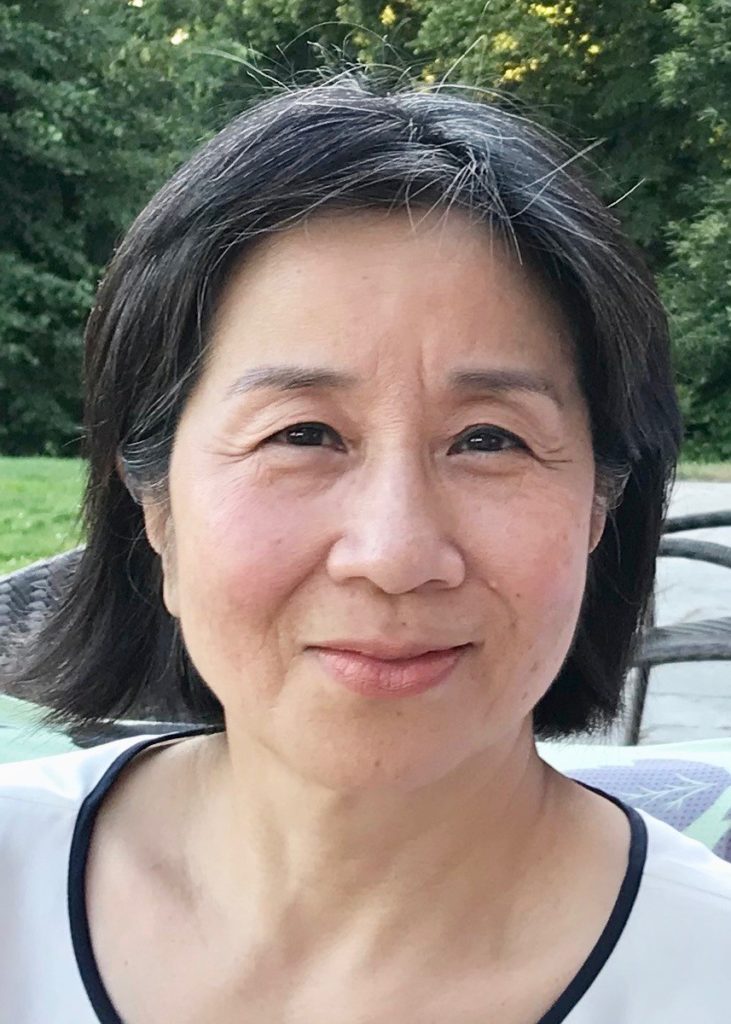
Lih-Mei Liao, PhD, FBPS
Clinical and Health Psychologist
Dr. David Sandberg uses research evidence to define the role of parents, patients, and providers in the decision making process regarding the care of patients with intersex traits (differences in sex development). Dr. Lih-Mei Liao describes the social and cultural influences on the treatment and care of patients with intersex traits. The presentation was recorded at Intersex Traits (Differences in Sex Development); Clinical and ethical considerations in care across the lifespan, on Oct. 25-26, 2021.
Learning Objectives:
At the conclusion of this educational program, learners will be able to:
- Identify the cultural and transactional influences on childhood genital surgery and the disadvantages of surgery.
- Recognize emotional constraints on informed consent.
- Analyze the roles that parents and clinicians have in the treatment decision making process of intersex patients.

In support of improving patient care, Boston Children’s Hospital is jointly accredited by the Accreditation Council for Continuing Medical Education (ACCME), the Accreditation Council for Pharmacy Education (ACPE), and the American Nurses Credentialing Center (ANCC), to provide continuing education for the healthcare team.
Physician
Boston Children’s Hospital designates this live activity for a maximum of 0.5 AMA PRA Category 1 Credits ™. Physicians should claim only credit commensurate with the extent of their participation in this activity.
Risk Management
This activity meets the requirements for 0.5 Risk Management Credits as proscribed by the Massachusetts Board of Registration in Medicine and defined in 243 CMR 2.06(5)(d) I. Please check your individual state licensing board requirements before claiming these credits.
Nurse
Boston Children’s Hospital designates this activity for 0.5 contact hours for nurses. Nurses should only claim credit commensurate with the extent of their participation in the activity.
Physician Assistant
Boston Children’s Hospital has been authorized by the American Academy of PAs (AAPA) to award AAPA Category 1 CME credits for activities planned in accordance with AAPA CME Criteria. This activity is designated for 0.5 AAPA Category 1 CME credits. PAs should only claim credit commensurate with the extent of their participation.
Disclosure Policy
Boston Children’s Hospital adheres to all ACCME Essential Areas, Standards, and Policies. It is Boston Children’s policy that those who have influenced the content of a CE activity (e.g. planners, faculty, authors, reviewers and others) disclose all relevant financial relationships with commercial entities so that Boston Children’s may identify and resolve any conflicts of interest prior to the activity. These disclosures will be provided in the activity materials along with disclosure of any commercial support received for the activity. Additionally, faculty members have been instructed to disclose any limitations of data and unlabeled or investigational uses of products during their presentations.
Disclosure Statement
The following planners, speakers, and content reviewers, on behalf of themselves, have reported the following relevant financial relationships with any entity producing, marketing, reselling, or distributing health care goods or services consumed by, or used on patients:
David E. Sandberg, PhD
Lih-Mei Liao, PhD, FBPS
None
None
Please see the FAQs below for common questions about how to work through a course. If you have a question or issue that is not addressed in the FAQ, please use this form to submit a help request, or if your issue urgent, call the CE office at: 617-919-9908.
How do I navigate this course? There are two ways to access and navigate course content with the interactive table of contents: at the bottom of the main course page or in the sidebar on the right side of the page. Select the links in the table of contents to access the corresponding content. Depending on the course, access to content may be linear, in which case each content module or section can only be accessed if the prior ones are completed, or non-linear, in which case modules and sections can be accessed in any order. Use the breadcrumbs at the top of any course page to orient yourself within a course, or return to a previous course section or the main course page. How do I claim credit? If the course has been accredited, available credits will be displayed on the course home page. Select only those credits that apply to your profession, and click/tap “Apply Selection.” You may make your selection at any point while you are taking the course, or after you have completed it. How do I view/print my transcript? You must be logged in to view your transcript. Select My Profile at the top of the page. If you do not see the transcript selector, be sure the Courses tab is selected. Select the type of credit and dates to include in your credit report. To include all credits from all time, leave the options blank. Select Download Transcript to view/download your transcript. Note each credit type in your transcripts starts a new page. How do I request a refund? Please email the CE Department to request a refund.How do I Navigate this Course?

How do I claim credit for this course?
How do I download a certificate?
How do I request a refund?
Intersex Traits, Genital Surgery: Who Gets to Decide & Why? Law & Policy
(Note: a course evaluation is required to receive credit for this course.)
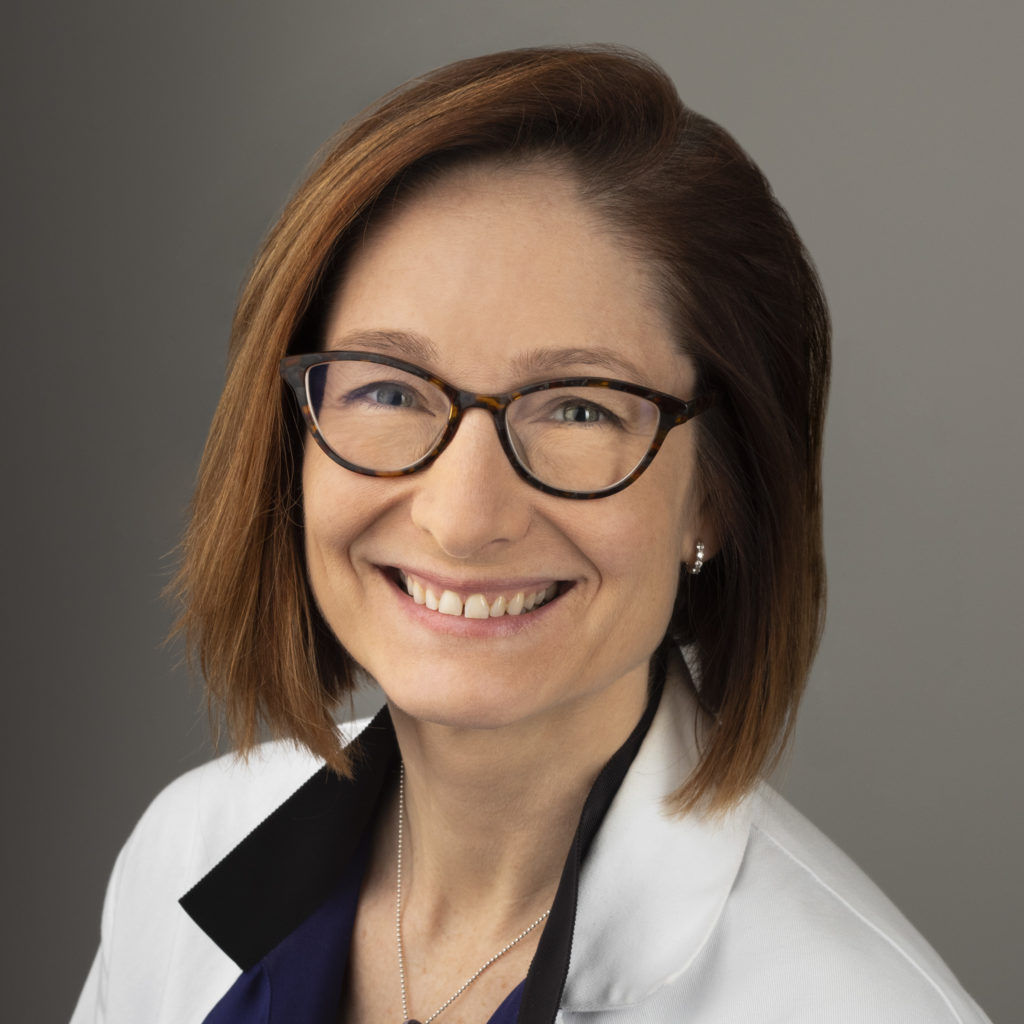
Louise P. King, MD, JD
Director of Reproductive Bioethics
Center for Bioethics, Harvard Medical School
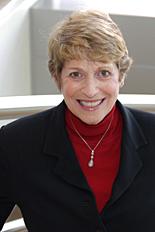
Julie A. Greenberg, JD
Emeritus Professor of Law
Thomas Jefferson School of Law
The goal of this presentation is to enhance learners’ understanding of the reproductive ethics surrounding genital, gonadal and reproductive anatomy and medical interventions, and how this informs the care of patients with intersex traits as well as the laws and policies around intersex patients and their care. The presentation was recorded at Intersex Traits (Differences in Sex Development); Clinical and ethical considerations in care across the lifespan, on Oct. 25-26, 2021.
Learning Objectives:
At the conclusion of this educational program, learners will be able to:
- Discuss the current legal rules that apply or should apply to the treatment of patients with intersex traits (differences of sex development).
- Analyze current treatment practices of patients with intersex traits in the context of reproductive ethics, adolescent autonomy, and historical events regarding reproductive rights.
- To encourage engagement in ethical and legal topics affecting intersex patients.

In support of improving patient care, Boston Children’s Hospital is jointly accredited by the Accreditation Council for Continuing Medical Education (ACCME), the Accreditation Council for Pharmacy Education (ACPE), and the American Nurses Credentialing Center (ANCC), to provide continuing education for the healthcare team.
Physician
Boston Children’s Hospital designates this live activity for a maximum of 0.75 AMA PRA Category 1 Credits ™. Physicians should claim only credit commensurate with the extent of their participation in this activity.
Risk Management
This activity meets the requirements for 0.75 Risk Management Credits as proscribed by the Massachusetts Board of Registration in Medicine and defined in 243 CMR 2.06(5)(d) I. Please check your individual state licensing board requirements before claiming these credits.
Physician Assistant
Boston Children’s Hospital has been authorized by the American Academy of PAs (AAPA) to award AAPA Category 1 CME credits for activities planned in accordance with AAPA CME Criteria. This activity is designated for 0.75 AAPA Category 1 CME credits. PAs should only claim credit commensurate with the extent of their participation.
Nurse
Boston Children’s Hospital designates this activity for 0.75 contact hours for nurses. Nurses should only claim credit commensurate with the extent of their participation in the activity.
Disclosure Policy
Boston Children’s Hospital adheres to all ACCME Essential Areas, Standards, and Policies. It is Boston Children’s policy that those who have influenced the content of a CE activity (e.g. planners, faculty, authors, reviewers and others) disclose all relevant financial relationships with commercial entities so that Boston Children’s may identify and resolve any conflicts of interest prior to the activity. These disclosures will be provided in the activity materials along with disclosure of any commercial support received for the activity. Additionally, faculty members have been instructed to disclose any limitations of data and unlabeled or investigational uses of products during their presentations.
Disclosure Statement
The following planners, speakers, and content reviewers, on behalf of themselves, have reported the following relevant financial relationships with any entity producing, marketing, reselling, or distributing health care goods or services consumed by, or used on patients:
Louise P. King, MD, JD
Julie A. Greenberg, JD
None
None
Please see the FAQs below for common questions about how to work through a course. If you have a question or issue that is not addressed in the FAQ, please use this form to submit a help request, or if your issue urgent, call the CE office at: 617-919-9908.
How do I navigate this course? There are two ways to access and navigate course content with the interactive table of contents: at the bottom of the main course page or in the sidebar on the right side of the page. Select the links in the table of contents to access the corresponding content. Depending on the course, access to content may be linear, in which case each content module or section can only be accessed if the prior ones are completed, or non-linear, in which case modules and sections can be accessed in any order. Use the breadcrumbs at the top of any course page to orient yourself within a course, or return to a previous course section or the main course page. How do I claim credit? If the course has been accredited, available credits will be displayed on the course home page. Select only those credits that apply to your profession, and click/tap “Apply Selection.” You may make your selection at any point while you are taking the course, or after you have completed it. How do I download a certificate? There are two ways to view/download your certificate: from within the course or from the course listing under your profile (select the document icon). In either case, you must have selected at least one available course credit type to generate a certificate. How do I view/print my transcript? You must be logged in to view your transcript. Select My Profile at the top of the page. If you do not see the transcript selector, be sure the Courses tab is selected. Select the type of credit and dates to include in your credit report. To include all credits from all time, leave the options blank. Select Download Transcript to view/download your transcript. Note each credit type in your transcripts starts a new page. How do I request a refund? Please email the CE Department to request a refund.How do I Navigate this Course?

How do I claim credit for this course?
How do I download a certificate?
How do I view/print my transcript?
How do I request a refund?
COVID-19 and Vaccines: Cardiac Implications
(Note: a course evaluation is required to receive credit for this course.)
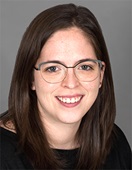
Audrey Dionne, MD
Attending Cardiologist, Department of Cardiology, Boston Children’s Hospital
Instructor of Pediatrics, Harvard Medical School
In this presentation, Dr. Audrey Dionne reviews the recommendations for return to sports following COVID-19 infection and the complications associated with COVID-19 vaccines in children and adolescents. The presentation was recorded at Advances in Pediatric Healthcare 2021, on Oct. 28, 2021.
Learning Objectives:
At the conclusion of this educational program, learners will be able to:
- To review recommendations for return to sports following COVID-19 infection
- To review complications associated with COVID-19 vaccine in children and adolescents

In support of improving patient care, Boston Children’s Hospital is jointly accredited by the Accreditation Council for Continuing Medical Education (ACCME), the Accreditation Council for Pharmacy Education (ACPE), and the American Nurses Credentialing Center (ANCC), to provide continuing education for the healthcare team.
Physician
Boston Children’s Hospital designates this live activity for a maximum of 0.75 AMA PRA Category 1 Credits ™. Physicians should claim only credit commensurate with the extent of their participation in this activity.
Risk Management
This activity meets the requirements for 0.75 Risk Management Credits as proscribed by the Massachusetts Board of Registration in Medicine and defined in 243 CMR 2.06(5)(d) I. Please check your individual state licensing board requirements before claiming these credits.
Nurse
Boston Children’s Hospital designates this activity for 0.75 contact hours for nurses. Nurses should only claim credit commensurate with the extent of their participation in the activity.
Disclosure Policy
Boston Children’s Hospital adheres to all ACCME Essential Areas, Standards, and Policies. It is Boston Children’s policy that those who have influenced the content of a CE activity (e.g. planners, faculty, authors, reviewers and others) disclose all relevant financial relationships with commercial entities so that Boston Children’s may identify and resolve any conflicts of interest prior to the activity. These disclosures will be provided in the activity materials along with disclosure of any commercial support received for the activity. Additionally, faculty members have been instructed to disclose any limitations of data and unlabeled or investigational uses of products during their presentations.
Disclosure Statement
The following planners, speakers, and content reviewers, on behalf of themselves, have reported the following relevant financial relationships with any entity producing, marketing, reselling, or distributing health care goods or services consumed by, or used on patients:
Audrey Dionne, MD
None
Please see the FAQs below for common questions about how to work through a course. If you have a question or issue that is not addressed in the FAQ, please use this form to submit a help request, or if your issue is urgent, call the CE office at: 617-919-9908.
How do I navigate this course? There are two ways to access and navigate course content with the interactive table of contents: at the bottom of the main course page or in the sidebar on the right side of the page. Select the links in the table of contents to access the corresponding content. Depending on the course, access to content may be linear, in which case each content module or section can only be accessed if the prior ones are completed, or non-linear, in which case modules and sections can be accessed in any order. Use the breadcrumbs at the top of any course page to orient yourself within a course, or return to a previous course section or the main course page. How do I claim credit? If the course has been accredited, available credits will be displayed on the course home page. Select only those credits that apply to your profession, and click/tap “Apply Selection.” You may make your selection at any point while you are taking the course, or after you have completed it. How do I download a certificate? There are two ways to view/download your certificate: from within the course or from the course listing under your profile (select the document icon). In either case, you must have selected at least one available course credit type to generate a certificate. How do I view/print my transcript? You must be logged in to view your transcript. Select My Profile at the top of the page. If you do not see the transcript selector, be sure the Courses tab is selected. Select the type of credit and dates to include in your credit report. To include all credits from all time, leave the options blank. Select Download Transcript to view/download your transcript. Note each credit type in your transcripts starts a new page. How do I request a refund? Please email the CE Department to request a refund.How do navigate this course?

How do I claim credit for this course?
How do I download a certificate?
How do I view/print my transcript?
How do I request a refund?
An Introduction to Racism in Medicine
(Note: a course evaluation is required to receive credit for this course.)
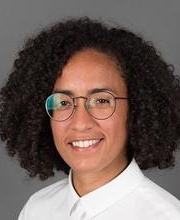
Camila Mateo, MD
General Pediatrics Attending, Martha Eliot Health Center and Boston Children’s Hospital
Diversity Officer, Boston Combined Residency Program Boston Children’s Hospital
Morgan-Zinsser Associate Director of Faculty Development in Inclusive Teaching and Anti-Racism, Harvard Medical School
In this presentation, Dr. Mateo discusses the vocabulary, history, and societal mechanisms that provide the foundation for racism in health care. The presentation was recorded at Advances in Pediatric Healthcare 2021, on Oct. 28, 2021.
Learning Objectives:
At the conclusion of this educational program, learners will be able to:
- Identify manifestations of racism in patients’ lives
- Discuss racism as a root cause of disparities in health and health care

In support of improving patient care, Boston Children’s Hospital is jointly accredited by the Accreditation Council for Continuing Medical Education (ACCME), the Accreditation Council for Pharmacy Education (ACPE), and the American Nurses Credentialing Center (ANCC), to provide continuing education for the healthcare team.
Physician
Boston Children’s Hospital designates this live activity for a maximum of 1.0 AMA PRA Category 1 Credit ™. Physicians should claim only credit commensurate with the extent of their participation in this activity.
Risk Management
This activity meets the requirements for 1.0 Risk Management Credits as proscribed by the Massachusetts Board of Registration in Medicine and defined in 243 CMR 2.06(5)(d) I. Please check your individual state licensing board requirements before claiming these credits.
Nurse
Boston Children’s Hospital designates this activity for 1.0 contact hours for nurses. Nurses should only claim credit commensurate with the extent of their participation in the activity.
Disclosure Policy
Boston Children’s Hospital adheres to all ACCME Essential Areas, Standards, and Policies. It is Boston Children’s policy that those who have influenced the content of a CE activity (e.g. planners, faculty, authors, reviewers and others) disclose all relevant financial relationships with commercial entities so that Boston Children’s may identify and resolve any conflicts of interest prior to the activity. These disclosures will be provided in the activity materials along with disclosure of any commercial support received for the activity. Additionally, faculty members have been instructed to disclose any limitations of data and unlabeled or investigational uses of products during their presentations.
Disclosure Statement
The following planners, speakers, and content reviewers, on behalf of themselves, have reported the following relevant financial relationships with any entity producing, marketing, reselling, or distributing health care goods or services consumed by, or used on patients:
Camila Mateo, MD
None
Please see the FAQs below for common questions about how to work through a course. If you have a question or issue that is not addressed in the FAQ, please use this form to submit a help request, or if your issue is urgent, call the CE office at: 617-919-9908.
How do I navigate this course? There are two ways to access and navigate course content with the interactive table of contents: at the bottom of the main course page or in sidebar on the right side of the page. Select the links in the table of contents to access the corresponding content. Depending on the course, access to content may be linear, in which case each content module or section can only be accessed if the prior ones are completed, or non-linear, in which case modules and sections can be accessed in any order. Use the breadcrumbs at the top of any course page to orient yourself within a course, or return to a previous course section or the main course page. How do I claim credit? If the course has been accredited, available credits will be displayed on the course home page. Select only those credits that apply to your profession, and click/tap “Apply Selection.” You may make your selection at any point while you are taking the course, or after you have completed it. How do I download a certificate? There are two ways to view/download your certificate: from within the course or from the course listing under your profile (select the document icon). In either case, you must have selected at least one available course credit type to generate a certificate. How do I view/print my transcript? You must be logged in to view your transcript. Select My Profile at the top of the page. If you do not see the transcript selector, be sure the Courses tab is selected. Select the type of credit and dates to include in your credit report. To include all credits from all time, leave the options blank. Select Download Transcript to view/download your transcript. Note each credit type in your transcripts starts a new page. How do I request a refund? Please email the CE Department to request a refund.How do navigate this course?

How do I claim credit for this course?
How do I download a certificate?
How do I view/print my transcript?
How do I request a refund?
COVID-19 Pediatric Update: Variants and Vaccines
(Note: a course evaluation is required to receive credit for this course.)
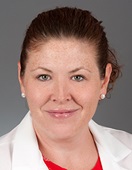
Kristin Moffitt, MD
Director, Emerging Pathogens Cluster of Clinical Research Excellence, Division of Infectious Diseases, Boston Children’s Hospital
Assistant Professor of Pediatrics, Harvard Medical School
In this presentation Dr. Moffitt reviews recent data on COVID infection rates in children, severity associated with the Delta variant as compared to pre-Delta, and the state of vaccines, present and future. The presentation was recorded at Advances in Pediatric Healthcare 2021, on Oct. 28, 2021.
Learning Objectives:
At the conclusion of this educational program, learners will be able to:
- Review the impact of the Delta variant on pediatric morbidity and mortality
- Describe the current state of pediatric COVID vaccines and future vaccine considerations
- Briefly review what’s known about long COVID in children

In support of improving patient care, Boston Children’s Hospital is jointly accredited by the Accreditation Council for Continuing Medical Education (ACCME), the Accreditation Council for Pharmacy Education (ACPE), and the American Nurses Credentialing Center (ANCC), to provide continuing education for the healthcare team.
Physician
Boston Children’s Hospital designates this live activity for a maximum of 0.75 AMA PRA Category 1 Credits ™. Physicians should claim only credit commensurate with the extent of their participation in this activity.
Risk Management
This activity meets the requirements for 0.75 Risk Management Credits as proscribed by the Massachusetts Board of Registration in Medicine and defined in 243 CMR 2.06(5)(d) I. Please check your individual state licensing board requirements before claiming these credits.
Nurse
Boston Children’s Hospital designates this activity for 0.75 contact hours for nurses. Nurses should only claim credit commensurate with the extent of their participation in the activity.
Disclosure Policy
Boston Children’s Hospital adheres to all ACCME Essential Areas, Standards, and Policies. It is Boston Children’s policy that those who have influenced the content of a CE activity (e.g. planners, faculty, authors, reviewers and others) disclose all relevant financial relationships with commercial entities so that Boston Children’s may identify and resolve any conflicts of interest prior to the activity. These disclosures will be provided in the activity materials along with disclosure of any commercial support received for the activity. Additionally, faculty members have been instructed to disclose any limitations of data and unlabeled or investigational uses of products during their presentations.
Disclosure Statement
The following planners, speakers, and content reviewers, on behalf of themselves, have reported the following relevant financial relationships with any entity producing, marketing, reselling, or distributing health care goods or services consumed by, or used on patients:
Kristin Moffitt, MD
None
Please see the FAQs below for common questions about how to work through a course. If you have a question or issue that is not addressed in the FAQ, please use this form to submit a help request, or if your issue is urgent, call the CE office at: 617-919-9908.
How do I navigate this course? There are two ways to access and navigate course content with the interactive table of contents: at the bottom of the main course page or in sidebar on the right side of the page. Select the links in the table of contents to access the corresponding content. Depending on the course, access to content may be linear, in which case each content module or section can only be accessed if the prior ones are completed, or non-linear, in which case modules and sections can be accessed in any order. Use the breadcrumbs at the top of any course page to orient yourself within a course, or return to a previous course section or the main course page. How do I claim credit? If the course has been accredited, available credits will be displayed on the course home page. Select only those credits that apply to your profession, and click/tap “Apply Selection.” You may make your selection at any point while you are taking the course, or after you have completed it. How do I download a certificate? There are two ways to view/download your certificate: from within the course or from the course listing under your profile (select the document icon). In either case, you must have selected at least one available course credit type to generate a certificate. How do I view/print my transcript? You must be logged in to view your transcript. Select My Profile at the top of the page. If you do not see the transcript selector, be sure the Courses tab is selected. Select the type of credit and dates to include in your credit report. To include all credits from all time, leave the options blank. Select Download Transcript to view/download your transcript. Note each credit type in your transcripts starts a new page. How do I request a refund? Please email the CE Department to request a refund.How do navigate this course?

How do I claim credit for this course?
How do I download a certificate?
How do I view/print my transcript?
How do I request a refund?
What’s New for Clinical Guidelines for H. pylori Infection in Children
(Note: a course evaluation is required to receive credit for this course.)
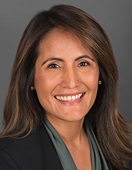
Silvana Bonilla, MD, MS
Attending Physician, Division of Gastroenterology, Hepatology, and Nutrition
Instructor, Harvard Medical School
This activity provides a practical approach to the diagnosis and treatment of Helicobacter pylori infection in children and adolescents. Recently published guidelines are reviewed and illustrated through the presentation of typical cases. This activity addresses the current variability in approach to this disorder and the need for an evidence-based approach.
Learning Objectives:
At the conclusion of this educational program, learners will be able to:
- identify who to test
- perform H. pylori infection test
- determine who to treat
- develop a treatment plan

In support of improving patient care, Boston Children’s Hospital is jointly accredited by the Accreditation Council for Continuing Medical Education (ACCME), the Accreditation Council for Pharmacy Education (ACPE), and the American Nurses Credentialing Center (ANCC), to provide continuing education for the healthcare team.
Physicians
Boston Children’s Hospital designates this live activity for a maximum of 0.5 AMA PRA Category 1 Credits ™. Physicians should claim only credit commensurate with the extent of their participation in this activity.
MOC II
Successful completion of this CME activity, which includes participation in the activity, with individual assessments of the participant and feedback to the participant, enables the participant to earn:
0.5 MOC II points in the American Board of Pediatrics’ (ABP) Maintenance of Certification (MOC) program
0.5 MOC II points in the American Board of Internal Medicine (ABIM) Maintenance of Certification (MOC) program
Physician Assistant
Boston Children’s Hospital has been authorized by the American Academy of PAs (AAPA) to award AAPA Category 1 CME credits for activities planned in accordance with AAPA CME Criteria. This activity is designated for 0.5 AAPA Category 1 CME credits. PAs should only claim credit commensurate with the extent of their participation.
Disclosure Policy
Boston Children’s Hospital adheres to all ACCME Essential Areas, Standards, and Policies. It is Boston Children’s policy that those who have influenced the content of a CE activity (e.g. planners, faculty, authors, reviewers and others) disclose all relevant financial relationships with commercial entities so that Boston Children’s may identify and resolve any conflicts of interest prior to the activity. These disclosures will be provided in the activity materials along with disclosure of any commercial support received for the activity. Additionally, faculty members have been instructed to disclose any limitations of data and unlabeled or investigational uses of products during their presentations.
Disclosure Statement
The following planners, speakers, and content reviewers, on behalf of themselves, have reported the following relevant financial relationships with any entity producing, marketing, reselling, or distributing health care goods or services consumed by, or used on patients:
Silvana Bonilla, MD, MS
None
Please see the FAQs below for common questions about how to work through a course. If you have a question or issue that is not addressed in the FAQ, please use this form to submit a help request, or if your issue is urgent, call the CE office at: 617-919-9908.
How do I navigate this course? There are two ways to access and navigate course content with the interactive table of contents: at the bottom of the main course page or in the sidebar on the right side of the page. Select the links in the table of contents to access the corresponding content. Depending on the course, access to content may be linear, in which case each content module or section can only be accessed if the prior ones are completed, or non-linear, in which case modules and sections can be accessed in any order. Use the breadcrumbs at the top of any course page to orient yourself within a course, or return to a previous course section or the main course page. How do I claim credit? If the course has been accredited, available credits will be displayed on the course home page. Select only those credits that apply to your profession, and click/tap “Apply Selection.” You may make your selection at any point while you are taking the course, or after you have completed it. How do I download a certificate? There are two ways to view/download your certificate: from within the course or from the course listing under your profile (select the document icon). In either case, you must have selected at least one available course credit type to generate a certificate. How do I view/print my transcript? You must be logged in to view your transcript. Select My Profile at the top of the page. If you do not see the transcript selector, be sure the Courses tab is selected. Select the type of credit and dates to include in your credit report. To include all credits from all time, leave the options blank. Select Download Transcript to view/download your transcript. Note each credit type in your transcripts starts a new page. How do I request a refund? Please email the CE Department to request a refund.How do navigate this course?

How do I claim credit for this course?
How do I download a certificate?
How do I view/print my transcript?
How do I request a refund?
Strabismus
(Note: a course evaluation is required to receive credit for this course.)
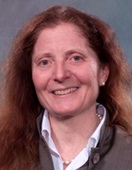
Linda Dagi, MD
Ophthalmologist, Department of Ophthalmology; Director, Adult Strabismus Service; Director, Pediatric Strabismus Service; Director, Ophthalmology Quality Assurance; Associate Professor, Harvard Medical School

David Hunter, MD, PhD
Ophthalmologist-in-Chief; Richard Robb Chair in Ophthalmology
Professor and Vice Chair, Harvard Medical School

Jason Mantagos, MD, PhD
Ophthalmologist, Department of Ophthalmology
Assistant Professor, Harvard Medical School
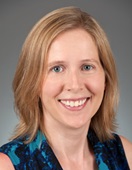
Mary Whitman, MD, PhD
Ophthalmologist, Department of Ophthalmology
Assistant Professor, Harvard Medical School
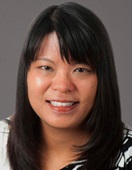
Carolyn Wu, MD
Ophthalmologist, Department of Ophthalmology
Assistant Professor, Harvard Medical School
The practice of pediatric ophthalmology is constantly changing. Clinicians are faced with the challenge of keeping up-to-date with new information and strategically incorporating those advances into their daily practice. “What’s New in Children’s Eye Health: Strabismus” is designed to address gaps in knowledge and competence regarding the impact of strabismus on visual function in children. In an innovative teaching format, members from the department of Ophthalmology at Boston Children’s Hospital present the information using a TED talk-style lecture format to promote a novel and engaging approach to transfer of medical knowledge.
Learning Objectives:
At the conclusion of this educational program, learners will be able to:
- Understand the impact eye misalignment or strabismus on visual function
- Develop tools towards identification and characterization of types of eye misalignment
- Discover advances in treatment of eye misalignment in children

In support of improving patient care, Boston Children’s Hospital is jointly accredited by the Accreditation Council for Continuing Medical Education (ACCME), the Accreditation Council for Pharmacy Education (ACPE), and the American Nurses Credentialing Center (ANCC), to provide continuing education for the healthcare team.
Physicians
Boston Children’s Hospital designates this live activity for a maximum of 1.0 AMA PRA Category 1 Credits ™. Physicians should claim only credit commensurate with the extent of their participation in this activity.
MOC II
Successful completion of this CME activity, which includes participation in the activity, with individual assessments of the participant and feedback to the participant, enables the participant to earn:
1.0 MOC II points in the American Board of Pediatrics’ (ABP) Maintenance of Certification (MOC) program
1.0 MOC II points in the American Board of Internal Medicine (ABIM) Maintenance of Certification (MOC) program
1.0 MOC II points in the American Board of Ophthalmology (ABO) Maintenance of Certification (MOC) program
Disclosure Policy
Boston Children’s Hospital adheres to all ACCME Essential Areas, Standards, and Policies. It is Boston Children’s policy that those who have influenced the content of a CE activity (e.g. planners, faculty, authors, reviewers and others) disclose all relevant financial relationships with commercial entities so that Boston Children’s may identify and resolve any conflicts of interest prior to the activity. These disclosures will be provided in the activity materials along with disclosure of any commercial support received for the activity. Additionally, faculty members have been instructed to disclose any limitations of data and unlabeled or investigational uses of products during their presentations.
Disclosure Statement
The following planners, speakers, and content reviewers, on behalf of themselves, have reported the following relevant financial relationships with any entity producing, marketing, reselling, or distributing health care goods or services consumed by, or used on patients:
David Hunter, MD, PhD
Rebion, Inc. (Founder, equity, patents) Pediatric Vision Screening; Luminopia, Inc. (Advisor, equity) Amblyopia Therapy.
Linda Dagi, MD
Boston Neurosciences
Jason Mantagos, MD, PhD
Luminopia, Inc. (previous research support)
Mary Whitman, MD
None
Carolyn Wu, MD
None
Please see the FAQs below for common questions about how to work through a course. If you have a question or issue that is not addressed in the FAQ, please use this form to submit a help request, or if your issue is urgent, call the CE office at: 617-919-9908.
How do I navigate this course? There are two ways to access and navigate course content with the interactive table of contents: at the bottom of the main course page or in the sidebar on the right side of the page. Select the links in the table of contents to access the corresponding content. Depending on the course, access to content may be linear, in which case each content module or section can only be accessed if the prior ones are completed, or non-linear, in which case modules and sections can be accessed in any order. Use the breadcrumbs at the top of any course page to orient yourself within a course, or return to a previous course section or the main course page. How do I claim credit? If the course has been accredited, available credits will be displayed on the course home page. Select only those credits that apply to your profession, and click/tap “Apply Selection.” You may make your selection at any point while you are taking the course, or after you have completed it. How do I download a certificate? There are two ways to view/download your certificate: from within the course or from the course listing under your profile (select the document icon). In either case, you must have selected at least one available course credit type to generate a certificate. How do I view/print my transcript? You must be logged in to view your transcript. Select My Profile at the top of the page. If you do not see the transcript selector, be sure the Courses tab is selected. Select the type of credit and dates to include in your credit report. To include all credits from all time, leave the options blank. Select Download Transcript to view/download your transcript. Note each credit type in your transcripts starts a new page. How do I request a refund? Please email the CE Department to request a refund.How do navigate this course?

How do I claim credit for this course?
How do I download a certificate?
How do I view/print my transcript?
How do I request a refund?
RITA-T Online Training Program
(Note: a course evaluation is required to receive credit for this course.)
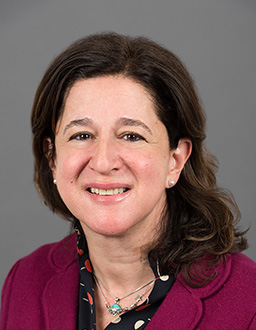
Roula Choueiri, MD
Director, primary care and community partnerships
Center for Autism and Related Disorders (CARD)/Kennedy Krieger Institute
Associate Professor, Neurology, Johns Hopkins Medical School
Welcome to the RITA-T web-based training! We are happy you chose to utilize this resource to become trained to administer the RITA-T in order to help better identify children at high risk for an ASD diagnosis. This web-based training program has been designed for users to work through in linear fashion with access to activities and content set to become available as you work through each piece of content.
*The RITA-T Team will be updating the administration of item I: Mirror: Self-Recognition. Please check back on the course site or our website for updates as we continue to develop this. Updates to the training course and RITA-T material will be made accordingly.*
Thank you!
The RITA-T Team
Learn more about the RITA-T on the Boston Children’s Hospital website
This course would not have been possible without the help, support, advice, and patience, of a whole team that includes: Acknowledgements
Before beginning, please print 6 RITA-T scoring sheets and the RITA-T Administration Manual from the “Downloads” tab above.
Estimated completion time: 3.5 hrs.
You can do each part at a time, i.e. save and get back to it. When you have completed all 8 sections, and achieved the appropriate scores on the practice videos, you will be awarded your certificate. If you ordered a kit, it was shipped to you when you registered.
Learning Objectives:
At the conclusion of this educational program, learners will be able to:
- Train reliably on administering a level 2 interactive ASD screener, the RITA-T that differentiates between ASD and non-ASD
- List the early signs of ASD
- Integrate a level 2 ASD screener in practice to improve access to diagnosis
- Analyze community and clinical models that can facilitate evaluations for ASD in toddlers, and strengthen community partnerships
This program consists of 8 sections:
- Pre-test
The pre-test will allow you to test your knowledge on important elements such as the early signs of autism, and screening tests, and compare your progress on the post-test at at the end of the course. There is no passing score required for the pre-test. - Educational Background
- Early Signs of ASD
- An Early Intervention Model
- Overview of the RITA-T
- RITA-T overview, development, current models
- Video of RITA-T administration and scoring.
- Step by Step Training
- In this section, you first need 3 scoring sheets labeled: CLIP 1, CLIP 2, and CLIP 3. You will watch 3 different presentations of each of the RITA-T 9 items being administered. You can watch this as many times as needed.
- When ready, you will score that item on the corresponding sheet. After you hand score each clip, you will then enter your scores on the corresponding questions under the video.
- After selecting your answers, select “Finish Activity” and you will be given points based on how many items you got correct for that press and an explanation on how the scoring was determined. You can re-score as many times as needed.
- Once you have completed the “post-clip quiz” for all 27 clips you will be ready to move on to the Independent Practice.
- Independent Practice Videos
- For this final section, you will watch 3 complete administrations of the RITA-T, one video at a time. You will use the 3 remaining scoring sheets to score each administration.
- At the end of each of the 3 test administrations you will select the correct score range for the administration.
- You must get the correct final score on the 3 videos within 3 points range to pass the evaluation and receive your certificate. You can re-score the videos as many times as needed.
- Post-test
You will need to complete a post-test at the completion of this training. You must earn a 70% or higher to continue. You can repeat this test as many times as you need to achieve this score. - Course Evaluation
Following the post-test, we ask that you complete a very short survey about the course. We will receive notification that you have completed your training. - Now you have trained on the RITA-T! Then what?
Now you need to practice using the RITA-T! Allow yourself a few times to administer it “live” even with the manual until you feel totally confident. Administer the RITA-T on young children in your family. Become familiar with each of the items and how to use them correctly. Administer the test on young children in your program who you do not have concerns for. Score in pairs to become familiar with the scoring and to establish interrater reliability. Identify a system within your program to integrate the RITA-T.
Please review the RITA-T Syllabus below, or download it with the link in the sidebar to the right. Once you have done that, please take the pre-test. The pre-test is designed to asses your general knowledge of the early signs of autism as well as characteristics of certain screening tools. The post-test is designed to assess your knowledge gain after having taken the course. See the Help tab for information about navigation this course and other frequently asked questions.
Syllabus
You will need to download and print one (1) copy of the RITA-T Manual, which you should keep with you as you practice and administer the screening test. You will also need to print a minimum of six (6) scoring sheets for this training. However, you can print as many scoring sheets as you need for extra practice and/or future use.
RITA-T Telehealth Material
The Telehealth RITA-T can be implemented in your practice or program once you have trained and are comfortable with the use and administration of the in-person RITA-T. You do not have to print any copies of the Telehealth material for this training. Please reach out to us at RITA-T@childrens.harvard.edu if you have any questions.

In support of improving patient care, Boston Children’s Hospital is jointly accredited by the Accreditation Council for Continuing Medical Education (ACCME), the Accreditation Council for Pharmacy Education (ACPE), and the American Nurses Credentialing Center (ANCC), to provide continuing education for the healthcare team.
Physicians, Physician Assistants, and Nurse Practitioners
Boston Children’s Hospital designates this live activity for a maximum of 3.5 AMA PRA Category 1 Credits ™. Physicians should claim only credit commensurate with the extent of their participation in this activity.
Nurse
Boston Children’s Hospital designates this activity for 4.00 contact hours for nurses. Nurses should only claim credit commensurate with the extent of their participation in the activity.
Psychologist
Continuing Education (CE) credits for psychologists are provided through the co-sponsorship of the American Psychological Association (APA) Office of Continuing Education in Psychology (CEP). The APA CEP Office maintains responsibly for the content of the programs.
Social Worker
As a Jointly Accredited Organization, Boston Children’s Hospital is approved to offer social work continuing education by the Association of Social Work Boards (ASWB) Approved Continuing Education (ACE) program. Organizations, not individual courses, are approved under this program. State and provincial regulatory boards have the final authority to determine whether an individual course may be accepted for continuing education credit. Boston Children’s Hospital maintains responsibility for this course. Social workers completing this course receive 4.00 ACE CE continuing education credits.
Disclosures
The RITA-T is an empirically derived, level-2 interactive measure that has been developed to screen for autism spectrum disorders in toddlers 18 to 36 months of age. Early Childhood and Health care providers can become trained to administer the RITA-T, which can be integrated into diverse settings to better screen and identify toddlers who are high risk and need further diagnostic evaluation. The screening test consist of 9 items and takes about 10 minutes to administer and score. Each of the 9 activities designed to evaluate five developmental constructs known to represent early signs of ASD in toddlers 18-36 months.
This online training program has been designed to mirror the in-person training protocol as best as possible. The content provided, requirements for certification, and time required for completion are all equal to what is offered in the live training. Efforts have been made to provide trainees with enough content to answer questions without additional support, however we understand there may be times when there are specific questions and we will answer this questions in a reasonable amount of time. It is important to note that this is an interactive screening test, and you should seek further diagnostic testing and consult your pediatrician if you have concerns for ASD.
Boston Children’s Hospital adheres to all ACCME Essential Areas, Standards, and Policies. It is Boston Children’s policy that those who have influenced the content of a CME activity (e.g. planners, faculty, authors, reviewers and others) disclose all relevant financial relationships with commercial entities so that Boston Children’s may identify and resolve any conflicts of interest prior to the activity. These disclosures will be provided in the activity materials along with disclosure of any commercial support received for the activity. Additionally, faculty members have been instructed to disclose any limitations of data and unlabeled or investigational uses of products during their presentations.
The following planners, speakers, and content reviewers, on behalf of themselves, have reported the following relevant financial relationships with any entity producing, marketing, reselling, or distributing health care goods or services consumed by, or used on patients:
Speaker Name, Degree
Entity name, or None
Please see the FAQs below for common questions about how to work through a course. If you have a question or issue that is not addressed in the FAQ, please use this form to submit a help request, or if your issue is urgent, call the CME office at: 617-919-9908.
How do I navigate this course? There are two ways to access and navigate course content with the interactive table of contents: at the bottom of the main course page or in the sidebar on the right side of the page. Select the links in the table of contents to access the corresponding content. Depending on the course, access to content may be linear, in which case each content module or section can only be accessed if the prior ones are completed, or non-linear, in which case modules and sections can be accessed in any order. Use the breadcrumbs at the top of any course page to orient yourself within a course, or return to a previous course section or the main course page. How do I claim credit? If the course has been accredited, available credits will be displayed on the course home page. Select only those credits that apply to your profession, and click/tap “Apply Selection.” You may make your selection at any point while you are taking the course, or after you have completed it. How do I download a certificate? There are two ways to view/download your certificate: from within the course or from the course listing under your profile (select the document icon). In either case, you must have selected at least one available course credit type to generate a certificate. How do I view/print my transcript? You must be logged in to view your transcript. Select My Profile at the top of the page. If you do not see the transcript selector, be sure the Courses tab is selected. Select the type of credit and dates to include in your credit report. To include all credits from all time, leave the options blank. Select Download Transcript to view/download your transcript. Note each credit type in your transcripts starts a new page. How do I request a refund? Please email the CME Department to request a refund.How do navigate this course?

How do I claim credit for this course?
How do I download a certificate?
How do I view/print my transcript?
How do I request a refund?
